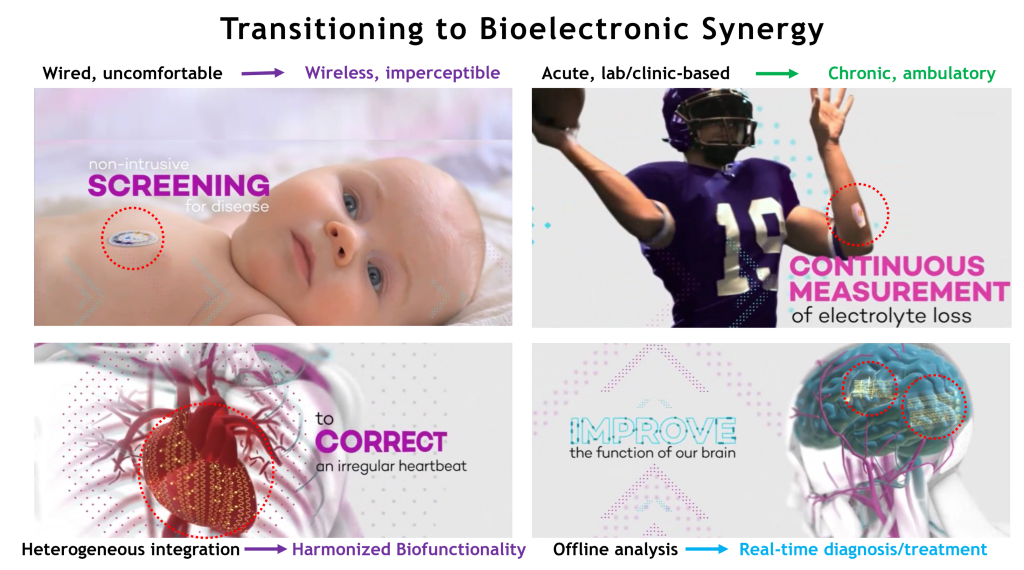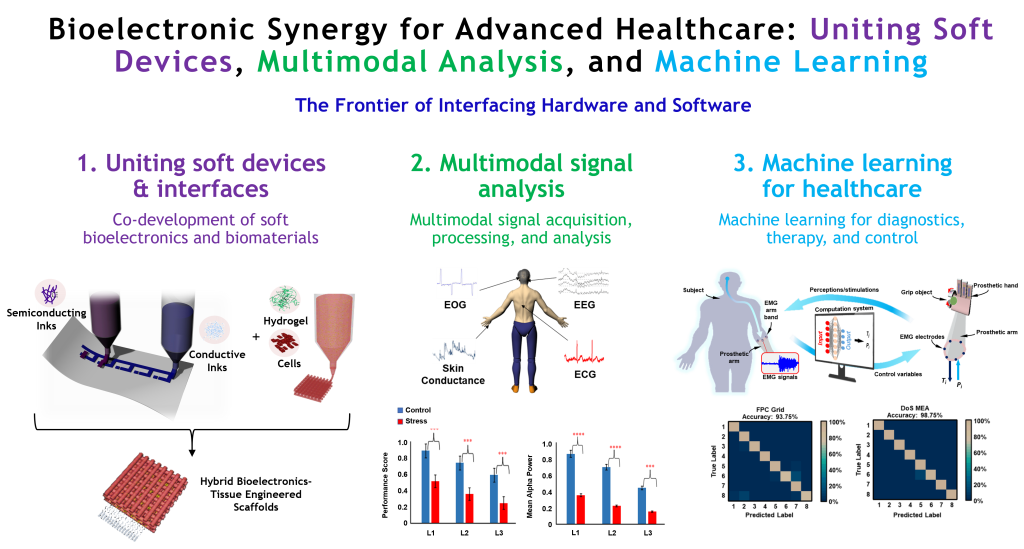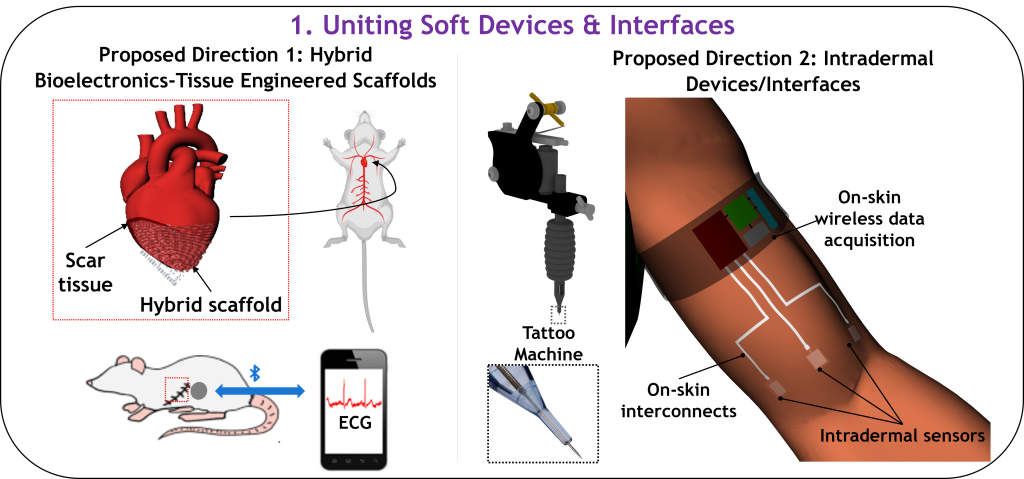Our overall research goal is to advance healthcare by uniting soft devices/interfaces, multimodal signal analysis, and machine learning. These innovative technologies are imperceptible to users, allowing them to carry on with their daily lives while continuously monitoring their health and delivering treatments. Our work aims to overcome the limitations of the current bioelectronics as it relates to wireless and imperceptible form factors, chronic/ambulatory monitoring, harmonized biofunctionality, and real-time diagnostics/treatment.

Research Thrusts

Further directions of work in the group and details of research thrusts are below:


Research Motivation
Our work is primarily motivated by the need to improve diagnosis and treatment outcomes, by leveraging soft devices/interfaces made from biocompatible/biological materials and then analyzing the signals obtained with those devices to determine various disease states or determine treatments.
- Typical sensors/stimulators are made in bulky, rigid formats, that are not comfortable for regular usage. Soft devices that are mechanically compliant and imperceptible would be much more suitable.
- Implantable tissues, though they can help regenerate lost functions/replace damaged tissue, often lack sensing and stimulation capabilities. These capabilities are important features that can determine the success of implantable tissues/devices.
- Once we have these soft devices/tissues, it is critical to understand the type of data to collect and the associated challenges with data collection. One prominent issue is motion artifacts, from relative motion between the skin/tissue and sensor interface.
- Furthermore, there has been minimal exploitation of machine learning (ML) algorithms when collecting multimodal data, especially using soft sensors. Typical multimodal sensor studies still employ rigid wearables, missing the high-quality data achievable by their soft counterparts.
By implementing/embedding ML with soft devices/tissues, we can improve diagnostics, therapy, and control, eventually leading to better health outcomes.

Our projects revolve around the intersection of bioelectronics and tissue engineering, focusing on specific challenges within both fields:
